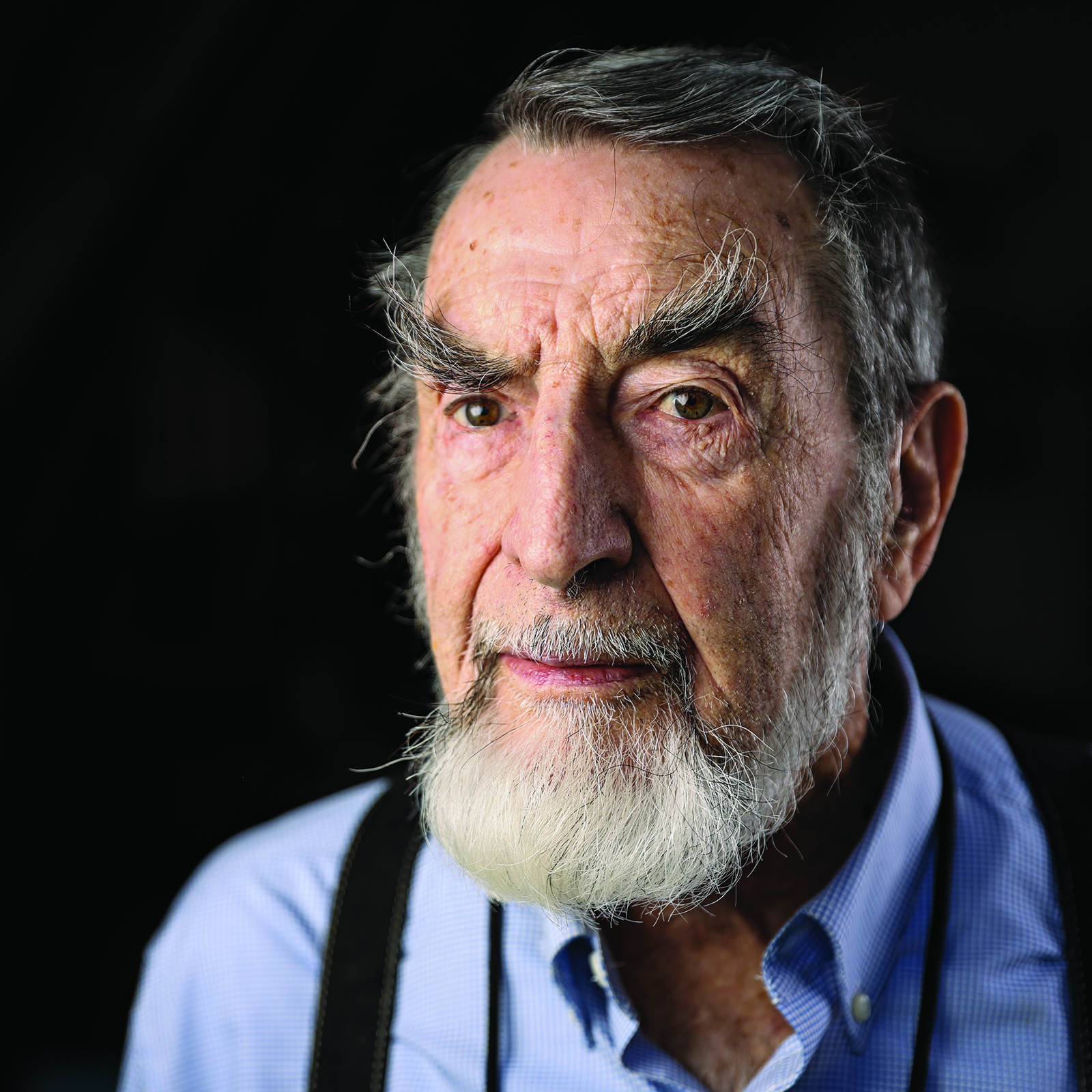
When Frank Hagel enlisted in the Korean War, the 17-year-old high school graduate wasn’t sure what to expect of his service in the Navy. His knack for drawing, however, made him the ideal scout for U.S. intelligence, and for three years, the young artist sketched Chinese insignias while strapped to the back of a low-flying sea plane along the coasts of Korea.
That drawing talent first emerged during his childhood in the Flathead Valley, where Hagel recalls his mother and sister encouraging him to take up the craft at 6 years old. Eight decades later, home remains Kalispell for the 87-year-old artist, who has gained national renown for chronicling the history of his homeland and its people onto the canvas.
While drawing upstairs in his childhood house one afternoon, Hagel had accidentally doodled onto a celotex-finished wall. Unaware up until that point, his mother recognized a special craft to the young boy’s mess, and from that moment forward, to his surprise, she encouraged his drawings of cowboys and horses on the walls.
At 8 years old, his mother also introduced Hagel to his other passion, fly fishing, during a packing trip into the Bob Marshall Wilderness. After learning how to spot trout in the river, the two cooked what they caught together in her Dutch oven. Into adolescence, he took to fly fishing by himself, and later in life, a longing to recapture that riverside serenity would reel him back to Kalispell.
Hagel honed his art skills in grade school. “I was an artist,” Hagel said, “and teachers encouraged it, too.” His seventh-grade art teacher, Dorothy Hutchinson, was an especially enthusiastic believer in his creative potential. His high school’s lack of funding for the arts pushed the budding artist to learn other trades, but he never lost his unique sensitivity to the outdoors.
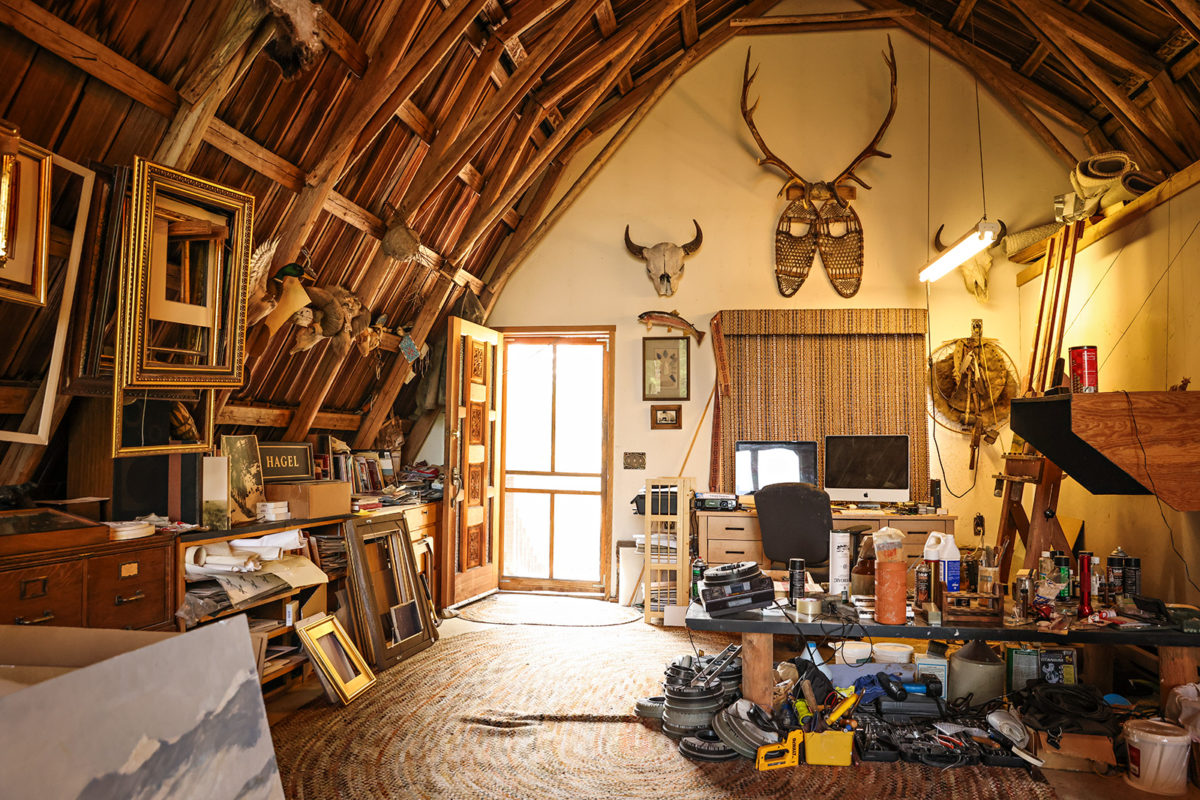
For several summers in his early childhood, Hagel’s father, Frederick, was an assistant ranger in Glacier National Park, and his family lodged in a canvas tent at St. Mary. Winona, his mother, looked after Hagel and his two siblings with the help of neighboring Native Americans, who were a constant and formative presence in his childhood due to his father’s jobs.
Frederick and Winona founded Hagel Tannery in 1929, before Hagel was born. At the tannery, which is still located in downtown Kalispell and now operated by his son Mike, Hagel regularly interacted with Native Americans who brought their hides for tanning. Garments, dresses and beading were made for shows on neighboring reservations, and even Hollywood. All of Kevin Costner’s Dances With Wolves wardrobe was tanned by Hagel Tannery. Hagel’s father pioneered a chemical that creates a white tan without having to “knock a deer’s brains out,” Hagel boasted.
His father, whom Hagel describes as a horseman, also owned a livery, Hagel’s Livery Feed and Saddle Horses, in Darby, and housed horses at their home in south Kalispell. Hagel was given his first horse when he was 6 years old. The catch: He was to look after the crippled stallion, which he named Prince, and aid in its recovery. By the age of 10, he was racing horses up and down the streets of Kalispell with his friends.
As a teenager, in the wake of the Great Depression, Hagel took his father’s advice to heart: get a job, work hard and make money. Hagel worked construction on Going-to-the-Sun Road, where he quarried mountain stone over several summer vacations, and beginning at 15 years old, he also labored as a railroad gandy dancer.
“He knows what loggers and outfitters and packers and all those kinds of people, what their reality is,” Sara Walsh, Hagel’s spouse, said.
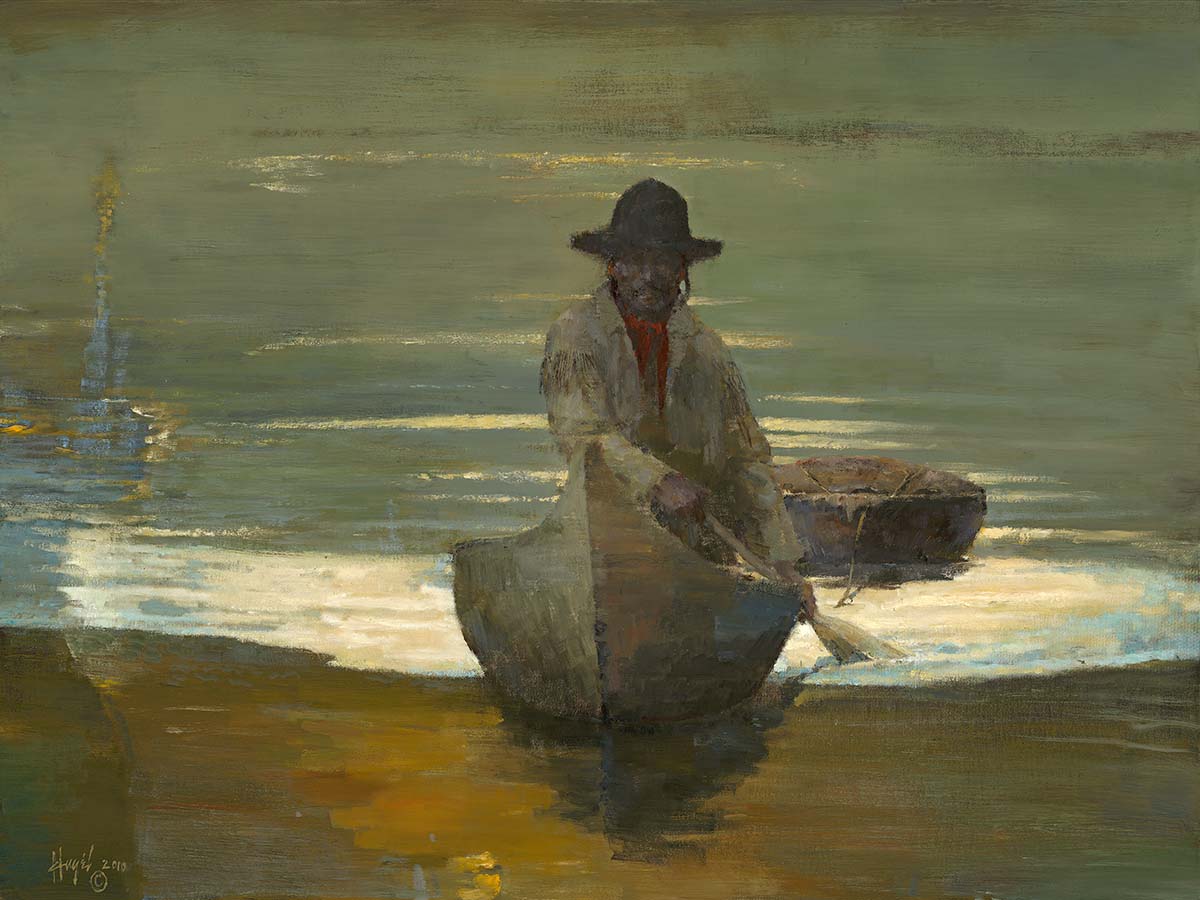
When Hagel returned from Korea, he spent the summer of 1953 working on road crews widening U.S. Highway 2 between Nyack and Belton, saving his $2.11 hourly wages for art school. With help from the GI Bill, Hagel pursued a degree in illustration and enrolled in the Art Center College of Design in Pasadena, California. He then moved to Burbank near Los Angeles with his first wife and high school sweetheart, Ethel, and the couple had their first son, Scott.
After graduating in 1959, Hagel moved to Detroit to work as an illustrator for magazine advertising. During the 11 years he spent in the “Motor City,” Hagel worked for three different studios, and designed illustrations for ad agencies and auto manufacturers like Ford, Parke-Davis, GM and other companies. In his studio today in Kalispell, Hagel’s original portfolio, the same one he took to find work after graduating, rests beside a coffee table and is full of old illustrations, including a seat cover advertisement for Ford, decorated with real paint chips. The portfolio also includes colorful tempera illustrations of animals, which Hagel says were “just for fun.”
During the 1960s in Detroit, Hagel grew keen to the cyclical recessions and shutdowns of auto manufacturers. He also was no stranger to the ongoing racism endured by Black Detroiters, and witnessed tensions escalate in his neighborhood during the long, hot summer of 1967. On the evening of the 12th Street Riot, the National Guard stopped Hagel on his drive home from work, and although the soldiers didn’t give him “the business,” as Hagel recalls, next to him stood three Black civilians stretched before their car and held at gunpoint. The disheartening prejudice, paired with Ethel’s death, prompted Hagel to return to Kalispell.
Eventually, as he and his three sons settled back into Kalispell, Hagel married a medical technologist, Rita, and was commissioned by the National Park Service to craft bronze and silver medallions for its Centennial Series. Over a two-year period in 1972-73, Hagel carved nearly 40 emblems unique to each park. It was during this time, while he was experimenting with plaster, that Hagel took up painting.
Practicing with watercolor and oils, Hagel focused on what he had missed most in the city: wildlife. An early painting titled “Kokanee” depicts an eagle with a kokanee salmon caught in its mouth; the stack of branches beneath the eagle’s claw resembles a bundle outside his studio’s window. His early paintings, like “Kokanee,” are life-like depictions, almost photographic.
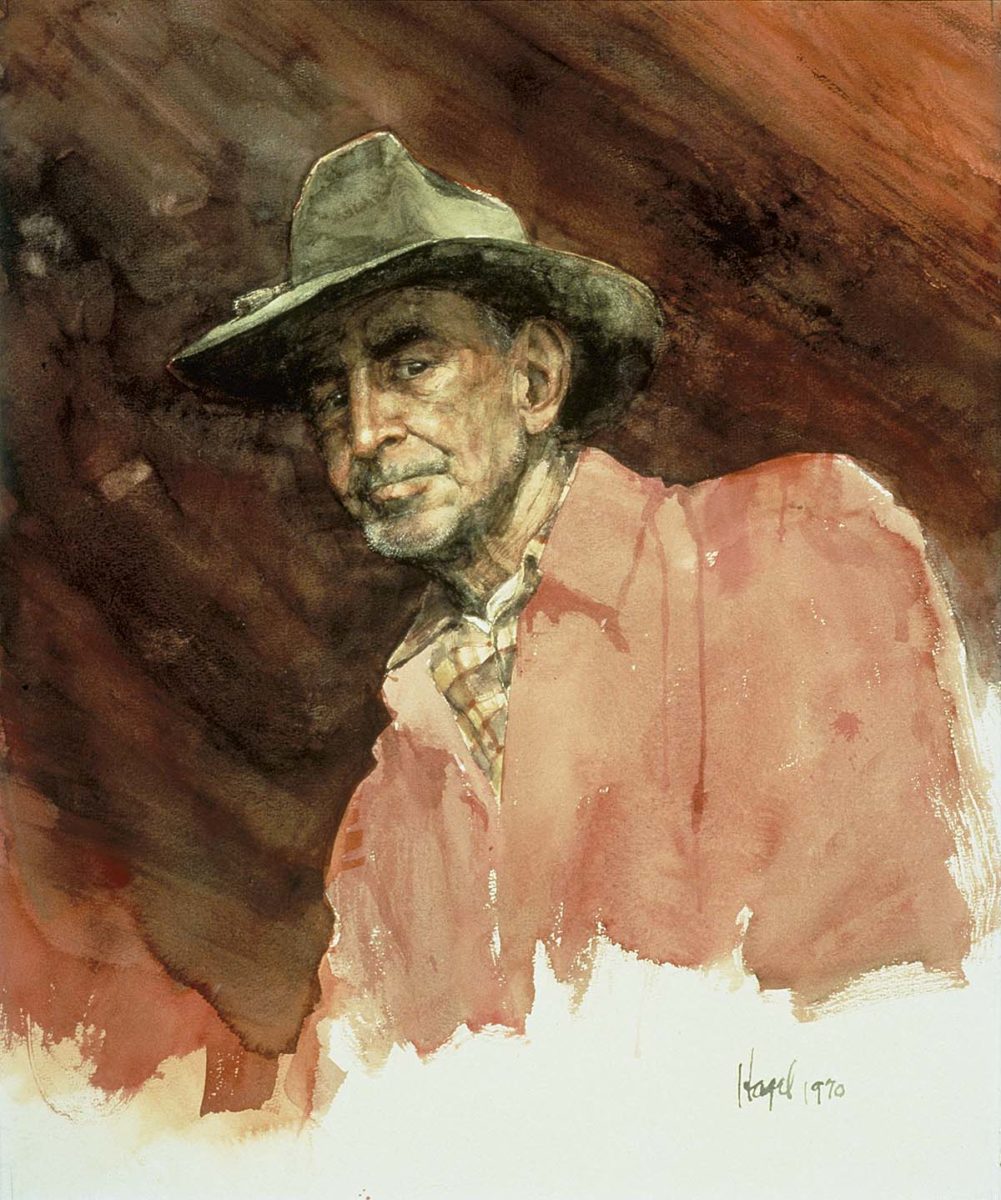
“I was doing a much tighter realism at that time, with tempera opaque watercolor,” Hagel explained. “But then I decided I didn’t want to paint that way the rest of my life. It was too confining.”
So his strokes became looser, similar to French impressionist paintings.
“I’m a fan of French impressionists,” Hagel said. “That’s who I would try to be if I was somebody else. That’s the direction I would go.”
The muddled strokes and absence of fine lines in a Hagel painting challenge viewers to look closer and engage more intimately with the subject matter. Picturesque and colorful, Hagel’s paintings chronicle the past, its people and land, with unique liveliness.
“I think there’s an authenticity to his work that is born of the love of history and that ability to imagine what it was really like,” Walsh said.
Bright-blue horizons, earth-toned basins and green fields punctuate vibrant scenes of Native Americans on horseback and Cree trappers traveling. In other works, like his portraits, specks and smudges of neutral and dark colors frame the faces of Native Americans and animals, while shadowy backdrops and close-up compositions create a haunting contrast from which the subject radiates.

“With a looser painting, the viewer is taking part in it, other than a photographic-looking-thing that’s been done for them,” Hagel said.
Nearing the 200-year anniversary of the Lewis and Clark Expedition, Hagel sought to reimagine the explorers’ voyage, on canvas, through what is now the state of Montana. He identified scenes straight from the travelers’ journals, the sites of which he would then visit on the same day, during the same season and at the same time, to depict the story more vividly and accurately.
Despite Hagel’s love for the West, his paintings do not romanticize or fictionalize the old West. Derek Vandeberg, president of FoR Fine Art galleries in Bigfork and Whitefish, finds Hagel’s creative process exceptional and crucial to his breathtaking paintings.
“I don’t know many artists who research to the depth that Frank does and who care so deeply to recreate things as they happened,” Vandeberg says. “His art is a historical record.”
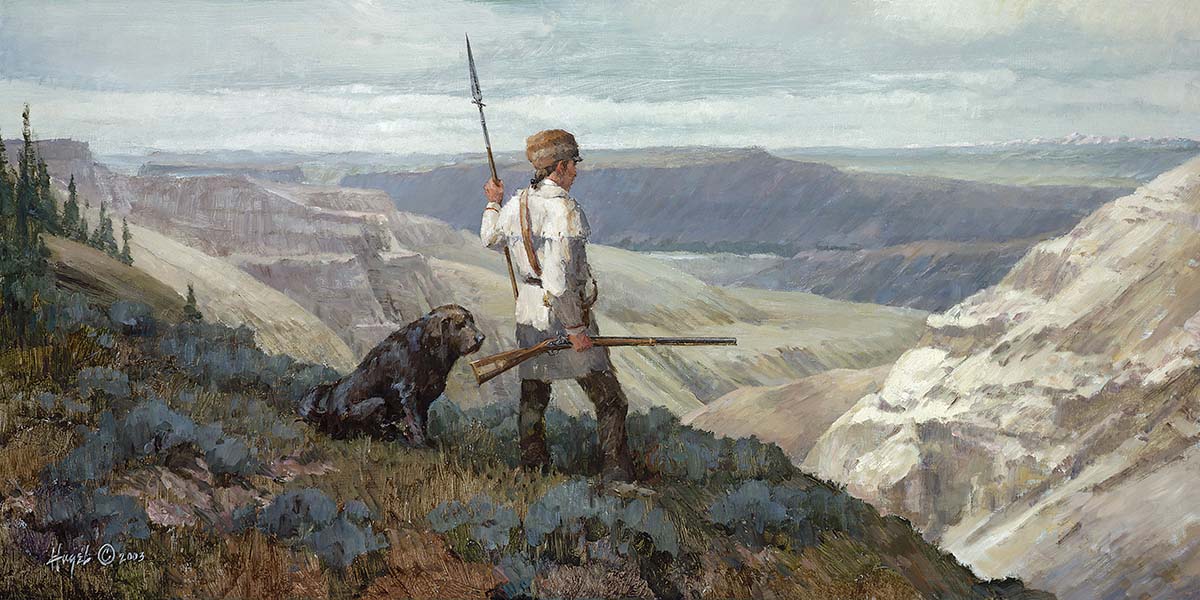
For one of the bicentennial series’ paintings, “Clark Party at Pompy’s Pillar,” which depicts the Clark party docking before the sandstone outcrop, Hagel visited the remarkable rock and tried to imagine what Pompeys Pillar looked like 200 years ago. After searching through old photos he uncovered from the Montana Historical Society, the artist discovered that the surrounding vegetation had grown significantly and the Yellowstone River had shifted laterally. Honoring these differences, Hagel painted Pompeys Pillar similar to how Clark found it.
“That’s what an artist or illustrator does,” Hagel said.
The founder of Semitool, Ray Thompson, commissioned most of Hagel’s Lewis and Clark collection, which today resides on the walls of Sykes Diner in downtown Kalispell. Three of the paintings were featured in Smithsonian magazine. Hagel has also shown his work widely, including pieces in the permanent collection at Hockaday Museum of Art and C.M. Russell Museum. He has participated in the famed Russell Auction for 50 years.
With an acute awareness for U.S. Western heritage, Hagel also branches out beyond famous historical figures like Lewis and Clark, depicting lesser-known adventures, people and practices. He interprets and chronicles the past like a historian, only with brush and canvas: the lives of the forgotten rendered through the subtleties of the light spectrum.
“I’m very interested in that period, because it was the first white people that ever saw this part of the country,” Hagel said. “I’m also very interested in the first people that came to the new world, the Indigenous Americans to first come across from Manchuria.”
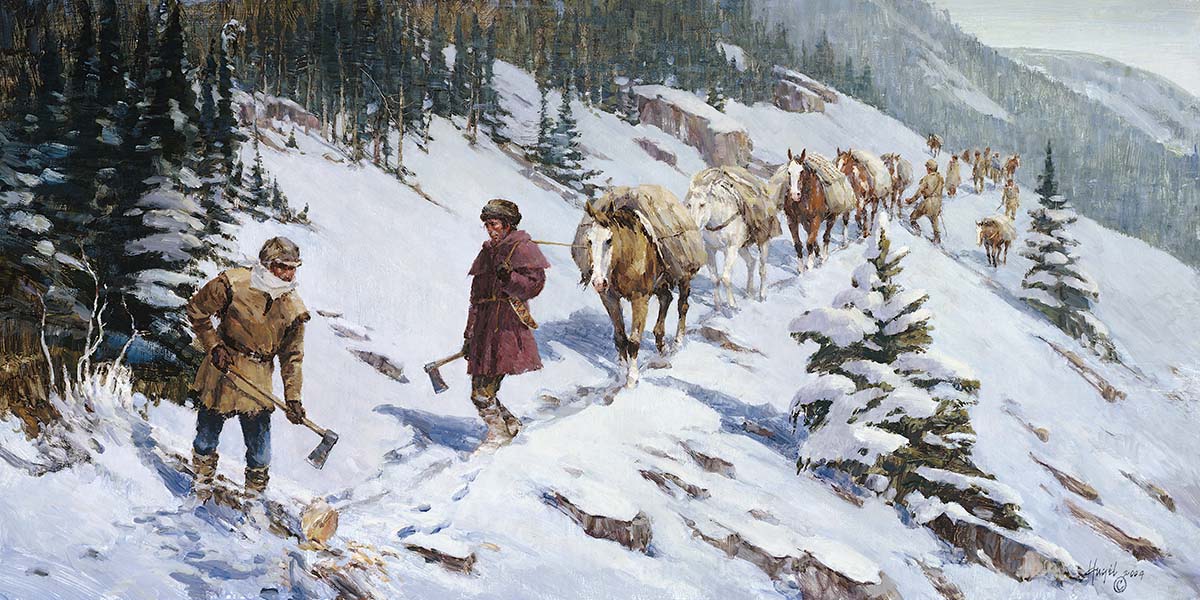
Upstairs in Hagel’s studio rests a large unfinished painting that depicts Asiatic travelers snowshoeing along the transcontinental Old North Trail. When imagining the snow scene and possible migration route, Hagel visited what remains of the historic pathway, which now passes through the Choteau area. His fascination with the Indigenous first-comers to North America originated in the pages of one of his favorite biographies, “The Old North Trail: Life and Religion of Blackfeet Indians,” by Walter McClintock.
“Frank is a huge reader,” Walsh, his wife, said.
In the comfort of his living room beneath the studio, Hagel becomes acquainted with characters in the pages of biographies such as McClintock’s, driven by an urge to retell their stories.
“We’ve all got those instincts buried in that subconscious, fortunate or unfortunate, that come out at the right time, and for me that instinct is to do a sketch,” Hagel said.
Recently, Hagel has absorbed himself in the biography of Louie Riel and the Métis people of Canada. “It was the Métis people, descendants of fur traders and Indians,” Hagel says, “ who brought the first wheel to our country, and later did all the freighting.” Perhaps it is the Métis who will inspire Hagel next.

Hagel and Walsh don’t always see eye to eye when looking at the same subject.
“But there’s nothing wrong with that,” Hagel says. “She is seeing it very directly, probably more directly than me.”
Like his French impressionist predecessors, Hagel sees his surroundings “as little spots of reflected light.”
“Impressionists were picking those spots of reflected light,” he says. “How they arranged it in a way on a surface, into a color or person, that’s the way I feel about it. I have no idea if that’s the way we see light, but it seems to me like it’s very true.”
Walsh has an eye of her own, too. Once a lawyer in D.C., but originally from Texas, Walsh co-founded the Augusta art gallery Latigo and Lace in 1992, where Hagel’s work is exhibited, and she’s still the book buyer and curator of 1,000 titles.
“I have loved the times when he can get me to see things through his eyes,” Walsh said.
The two were married in 2003. They had known each other for a decade, but an encounter at an art show in Great Falls proved that knowing isn’t the same as seeing. “I think that was when he saw me in a different light,” Walsh said.